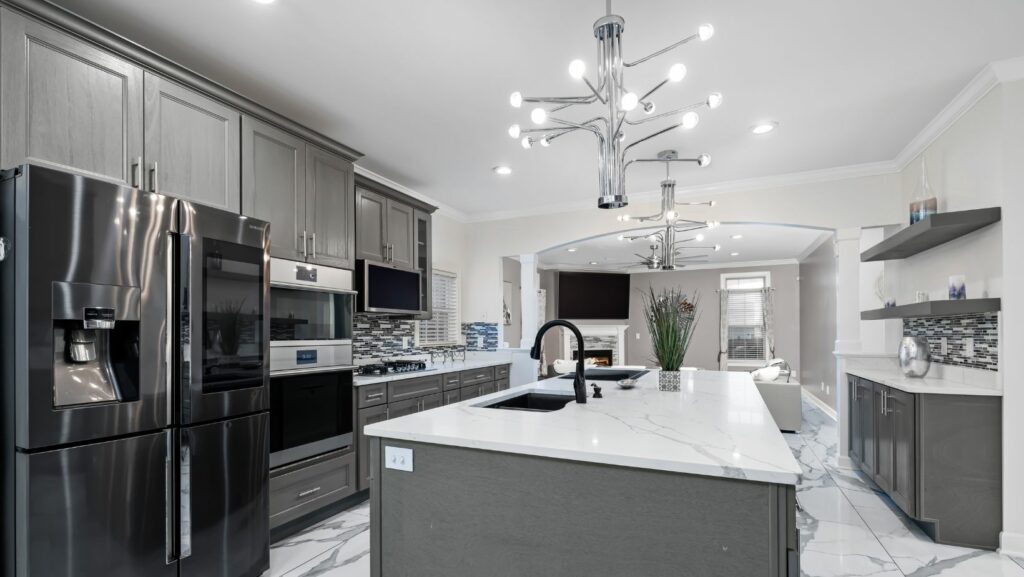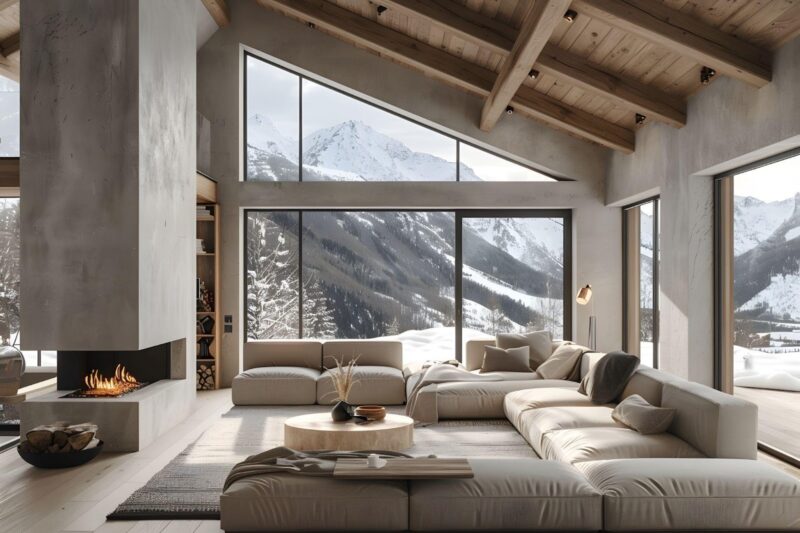
Proper lighting serves two essential purposes in your kitchen project—it must provide excellent illumination for crucial tasks like cooking and cleaning while enhancing the room’s atmosphere. With innovative and customizable lighting technologies, contractors like you can satisfactorily address these objectives and many other clients’ demands, whether for a home or commercial cooking space.
Smart bulbs and lighting controls permit adjustable light levels tailored to various culinary tasks. This blog article will share helpful lighting design tips that balance the cooking area’s functionality and aesthetic brightness needs, along with some product options you can consider installing in your house kitchen or restaurant workspace.
14 Beneficial Kitchen Lighting Tips
Presented below are some valuable kitchen lighting style suggestions for both home and commercial cooking spaces that contractors, homeowners, and commercial building owners should ponder:
- Layered Lighting: You should combine different lighting types to produce a well-balanced and functional culinary space. These layers include ambient or general lighting, task lighting, and accent lighting.
- Ambient Lighting: If your kitchen project aims to provide overall illumination, start with the ambient lighting. You can attain this through ceiling-mounted fixtures like recessed lights or flush-mount fixtures. However, you must ensure that this lighting style gets distributed evenly within the cooking vicinity to avoid harsh shadows.
- Task Lighting: Task lighting is essential for work zones like stovetops, countertops, and sinks. You can install under-cabinet, pendant, or track lighting to brighten these spaces adequately. It also helps ensure safety and efficiency during food preparation and cooking.
- Accent Lighting: You can utilize accent lighting to emphasize distinctive features in your culinary space, including decorative elements, artwork, or architectural details. It adds visual allure and a touch of sophistication.
- Color Temperature: Suggest to your clients to opt for a color temperature that best fits their kitchen’s purpose.
Cooler temperatures, usually around 4000K-5000K, increase visibility and focus, while warmer temperatures from 2700K-3000K generate a cozy ambiance.
- Dimmer Controls: Consider integrating dimmer switches for all lighting types in your cooking area project. It empowers you to modify the brightness according to diverse tasks and moods, preserving significant energy and extending your client’s bulb’s lifespan.
- Glare Avoidance: Think about the perfect position of your lighting fixtures, which can prevent direct glare. It is vital for task sites where you want to avoid extreme light shining directly into the cook’s eyes.
- Integration of Natural Lighting: Maximize using natural light as much as possible. Large windows, skylights, and glass doors reduce the need for artificial lighting during the day and create a pleasant ambiance. Many experts highly recommend relying on the Fakro DRF DU6 flat roof access skylight, which offers the best of both worlds—a warm and inviting natural light and an instant entry point toward your property’s roof.
- Uniform Lighting: As stated, you must secure equal and even light allocation throughout the culinary vicinity. Dodge overly bright spots or dark corners by strategically placing fixtures.
- Overhead Fixtures for Large Spaces: Propose to your clients to utilize larger overhead fixtures or multiple pendant lights to sufficiently cover the area with ambient lighting, specifically in bigger kitchens.
- Wise Use of Pendant Lights: Pendant lights can function as both task and decorative lighting. Hang them over your project’s islands or dining areas for heightened functionality and style.
- Easily accessible and maintained: You must rely on effortless lighting fixtures to clean and maintain.
In restaurant kitchens, clients will benefit more if they purchase fixtures that stand firm against the demands of a bustling cooking environment.
- Energy Efficiency: Construction pros highly suggest selecting LED bulbs, mainly if you target energy efficiency and longevity in your culinary work. LED technology has advanced, granting impressive warm and natural lighting options.
- Practice safety measures: Ensure all electrical work adheres to safety codes. You can depend on GFCI (Ground Fault Circuit Interrupter) outlets in areas where water and moisture are present to protect occupants and employees from electric shock.
The Importance of Proper Lighting in Kitchens
In kitchen design, the most fitting lighting can transform a kitchen space from ordinary to exceptional. For contractors, it’s about flawlessly blending ambient, accent, and tasking lighting layers to unleash the best in functionality and aesthetics. Homeowners find comfort in the thoughtful incorporation of natural light, dimmer controls for varying moods, and the cautious avoidance of glare. For commercial building owners, on the other hand, the fusion of energy-efficient LEDs with safety and maintenance considerations creates an efficient and welcoming workspace.
By beaming your kitchen with these insights, you’re not just lighting up a room—crafting an experience as dynamic as practical.





